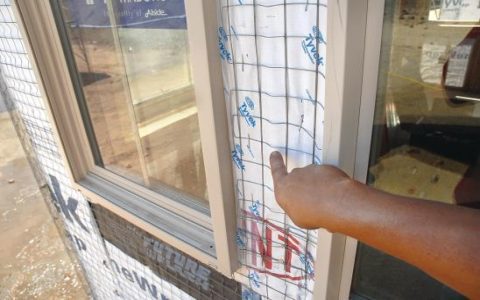Understanding Frame Stucco
Frame stucco refers to the application of a cementitious plaster, known as stucco, over a structural frame, typically constructed from wood or light-gauge steel. This method is a widely used exterior wall cladding system, valued for its durability, aesthetic versatility, and fire-resistant properties.
Key Components and Layers in Frame Stucco
A properly installed frame stucco system consists of several critical layers working together to provide a weather-tight and durable exterior:
- Structural Frame: This is the underlying support, usually wood studs (e.g., 2x4 or 2x6) or light-gauge steel framing.
- Sheathing: A layer of material, such as plywood, oriented strand board (OSB), or exterior-grade gypsum board, is fastened to the structural frame. This provides a solid backing for subsequent layers.
- Weather-Resistant Barrier (WRB): One or more layers of building paper, house wrap, or a liquid-applied membrane are installed over the sheathing. The WRB is crucial for protecting the sheathing and framing from moisture intrusion. Proper lapping and integration with flashings are essential.
- Lath: Metal lath (e.g., expanded metal lath, woven wire lath, or welded wire lath) is attached over the WRB. The lath serves as a mechanical key for the stucco to adhere to and helps reinforce the stucco, distributing stress to minimize cracking.
- Stucco Coats: Traditionally, stucco is applied in three distinct coats:
- Scratch Coat: The first layer, typically 3/8 inch thick, is applied directly to the lath. It is scored or "scratched" while still wet to create a rough surface that promotes a strong mechanical bond with the next coat.
- Brown Coat: The second layer, also around 3/8 inch thick, is applied over the cured scratch coat. It builds up the thickness and creates a true, flat plane for the finish coat. It is usually floated to densify the material.
- Finish Coat: The final, visible layer, typically 1/8 inch thick. This coat provides the desired texture (e.g., smooth, sand, dashed, or textured) and color. It can be integrally colored or painted after curing.
In some applications, particularly with proprietary systems or certain substrates, a two-coat stucco system (a base coat and a finish coat) might be used.

- Accessories: Components like casing beads (around openings), corner aids, weep screeds (at the base of walls to allow drainage), and control/expansion joints are vital for a functional and durable stucco system.
Advantages of Frame Stucco
- Durability: When correctly installed and maintained, stucco is a long-lasting cladding material resistant to rot, pests, and impact.
- Fire Resistance: Cement-based stucco is inherently fire-resistant, offering excellent protection to the underlying structure.
- Aesthetic Versatility: Stucco can be finished in a wide array of colors and textures, allowing for diverse architectural expressions.
- Low Maintenance: Generally requires minimal upkeep, though periodic inspection for cracks and proper sealing is recommended.
- Impact Resistance: Offers good resistance to impacts compared to some softer cladding materials.
Critical Considerations for Frame Stucco Installation
- Moisture Management: This is paramount. Proper installation of the WRB, correct lapping, integration with flashings (around windows, doors, penetrations), and the use of weep screeds are essential to prevent water from becoming trapped behind the stucco, which can lead to rot in wood framing or corrosion in steel framing.
- Crack Control: Stucco, being a rigid cementitious material, is prone to cracking due to shrinkage during curing, thermal expansion and contraction, or structural movement. The incorporation of control joints and expansion joints at appropriate intervals is crucial to accommodate these movements and minimize random cracking.
- Proper Curing: Each stucco coat must be allowed to cure adequately. Moist curing, especially for the scratch and brown coats, is important for developing strength and reducing shrinkage cracking. Rushing the process can compromise the integrity of the system.
- Substrate Stability: The framing and sheathing must be rigid and stable. Excessive movement or deflection in the substrate can transfer stress to the stucco, leading to cracks.
- Skilled Application: The performance of a frame stucco system heavily relies on the skill and knowledge of the installers. Proper mixing of the stucco, consistent application thickness, and correct detailing of accessories are vital.
- Climate Considerations: Local climate conditions can influence material selection and installation practices, particularly concerning curing times and moisture management details.











